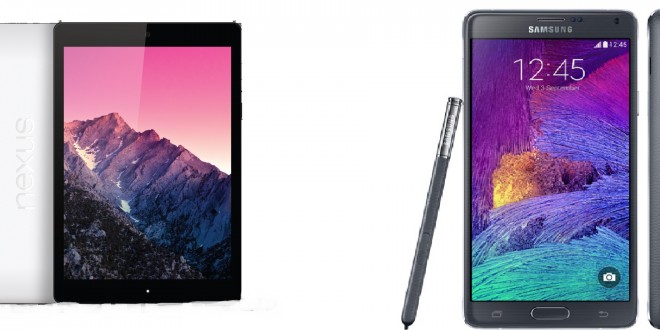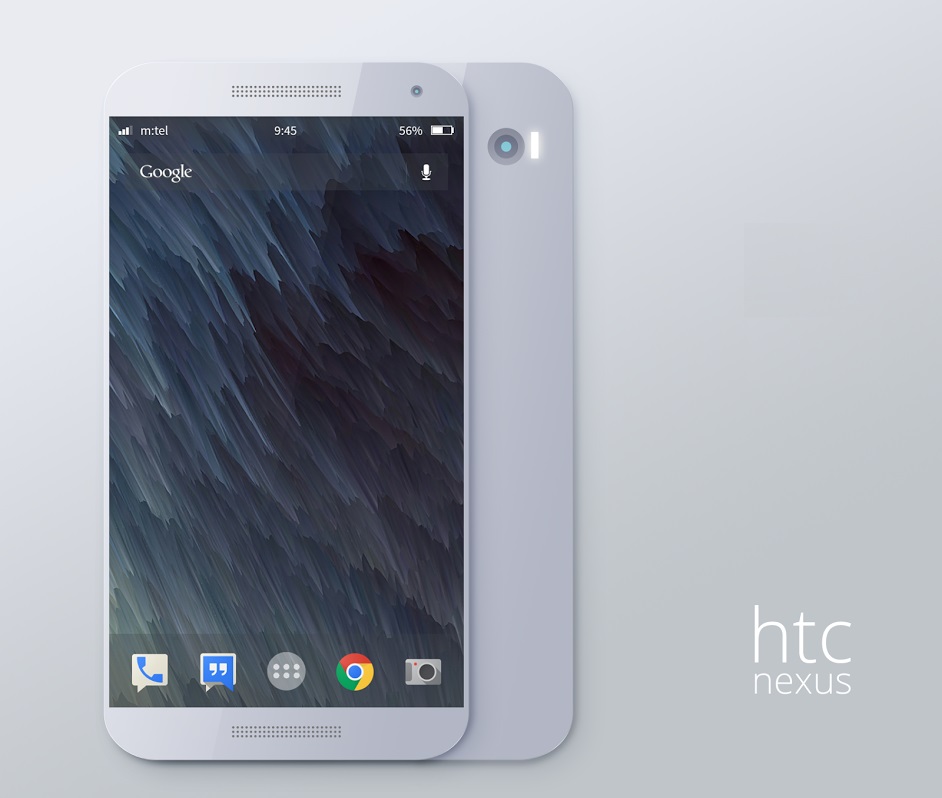The Nexus 9 is one of the most anticipated tablets of the year and its release promises the Android 5.0 update which will bring support to 64 bit configurations. A release date for the Nexus 9 has been pegged for either October 8, when HTC is holding the Double Exposure event where it will be releasing a new slefie-phone and a GoPro-like camera mount, or for October 16, a stand-alone event that has been rumored to have the Nexus 9 as its main attraction.
The Galasy Tab S 8.4 was released in June 2014 and since it has been considered one of the best tablets on the market thanks to its high quality screen and powerful processor choices. The Galaxy Tab S is a capable competitor against the iPad Air and the upcoming iPad Air 2 and against devices like the Asus Transformer Book T100 and Kindle Fire HDX. The Nexus 9 will also compete against the upcoming iPad Air 2 and many believe it will be the best tablet, next to the Nvidia Shield tablet, on the market.
The Galaxy Tab S has an 8.4 inch Super AMOLED screen with 1600*2560 resolution and 359 ppi pixel density. The Nexus 9 specs haven’t been confirmed yet, because Google is quite secretive about its Nexus line, but leaks say that the Nexus 9 will be manufactured by HTC and will sport an 8.9 inch 1440*2048 IPS display with 281 ppi pixel density. The Galaxy Tab S design is flat and sleek, and the tablet is surprisingly thin and light, almost as light as the iPad Air. The bezels on the Galaxy Tab S are very thin and do not obstruct its thin, flat design. The Nexus 9 hasn’t been shown in photos yet, but we have an idea that it will look similar to the iPad Mini 2, with thin bezels and a similar design to the Galaxy Tab S. That would be a considerable improvement compared to the Nexus 7, which had really big bezels surrounding the display.
HTC is known for the high quality designs it features on phones like the HTC One M8 and HTC One, with metal chassis and durable builds, so we expect the most from the company with the design of the Nexus 9. Google has not officially confirmed that HTC is the chosen company to be making the Nexus 9, but the search engine titan has hinted at the fact that it was going to choose a company that is innovative and which hasn’t been in the tablet market for quite a while now. HTC had had a tablet attempt a while back, but it was a flop and wasn’t received well, so the company fits the profile.
The camera on the Galaxy Tab S is an 8 MP rear shooter and 2.1 MP front shooter, with a LED flash next to the rear sensor. We don’t know much about what kind of camera HTC will be putting on the Nexus 9, but we can speculate that it will be a similar 8 MP rear shooter with LED flash and whispers say optical image stabilization will also be a feature, aside from the 3 MP selfie camera on the front. The Galaxy Tab S sports a pretty high quality camera compared to other tablets, but since photography isn’t the most comfortable activity you can pursue on a tablet, I find camera specs negligible when it comes to tablet comparisons. But that’s just me.
Spec-wise, Nvidia has confirmed during a lawsuit filing against Samsung that the Nexus 9 will sport the Nvidia Tegra K1 chipset, with 64 bit configuration and ULP GeForce Kepler GPU. The Galaxy Tab S has either a Snapdragon 800 CPU with Adreno 330 GPU or an Exynos 5420 with a Mali GPU. Both the Nexus 9 and the Galaxy Tab S have powerful processors running the show, so performance shouldn’t be an issue on either, but the Tegra CPU is 64 bit optimized which coupled with Android 5.0 L (Lemon Meringue Pie, Lion, Lollipop) will hopefully be a remarkable device fit for gaming and leisurely activities alike.
The Galaxy Tab S gets its juice from a 4900 mAH battery and we expect no less from the Nexus 9. 2 GB RAM and 16 or 32 GB internal storage are what we expect to see on the Nexus 9, but we also hope that a microSD card slot will be provided, unlike on the Nexus 7. The Galaxy Tab S has 3 GB RAM to work with either 16 or 32 GB internal storage, expandable by a microSD card. Even though the Galaxy Tab S has more RAM to work with, that doesn’t necessarily mean that it will trump the performance of the Nexus 9, but we can’t say for sure until be get our hands on Google’s new device.
As for features, the Galaxy Tab S has a fingerprint sensor, runs on Android 4.4 KitKat with TouchWiz overlaid alongside Bluetooth, IR blaster,LTE, microUSB and stereo speakers. Since HTC has done a great job on the HTC One M8 with the front-facing BoomSound speakers, we expect to see something at least as good if not better, on the Nexus 9. The Nexus 9 won’t have an IR blaster like the Galaxy Tab S, does, but since these are just rumored specs, that might end up being an incorrect assumption.
The Galaxy Tab S currently retails for around $400, which is an average price for a feature packed tablet, but the Nexus 9 will probably retail for less, most saying it will have a similar price to that of the Nexus 7 when it was launched. Thus, we can expect a price from $250 up to $350 for the Nexus 9. Since it does pack a lot more heft than its predecessor, we might see an increase in that price, but most regard it as unlikely. Google’s aim is to offer affordable, pure Android devices to U.S. customers (and others, soon), so the Nexus 9 will probably arrive as an affordable, yet powerful device.
 Load the Game Video Games, Reviews, Game News, Game Reviews & Game Video Trailers
Load the Game Video Games, Reviews, Game News, Game Reviews & Game Video Trailers





